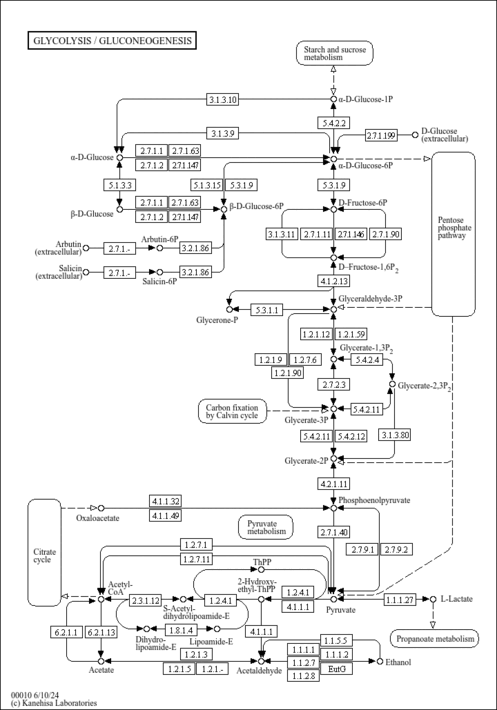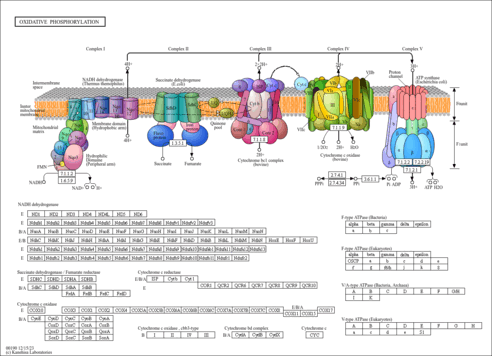| Glyceric acid 1,3-biphosphate,1TMS,isomer #1 | C[Si](C)(C)O[C@H](COP(=O)(O)O)C(=O)OP(=O)(O)O | 2068.8 | Semi standard non polar | 33892256 |
| Glyceric acid 1,3-biphosphate,1TMS,isomer #2 | C[Si](C)(C)OP(=O)(O)OC[C@@H](O)C(=O)OP(=O)(O)O | 2124.3 | Semi standard non polar | 33892256 |
| Glyceric acid 1,3-biphosphate,1TMS,isomer #3 | C[Si](C)(C)OP(=O)(O)OC(=O)[C@H](O)COP(=O)(O)O | 2096.1 | Semi standard non polar | 33892256 |
| Glyceric acid 1,3-biphosphate,2TMS,isomer #1 | C[Si](C)(C)O[C@H](COP(=O)(O)O[Si](C)(C)C)C(=O)OP(=O)(O)O | 2092.4 | Semi standard non polar | 33892256 |
| Glyceric acid 1,3-biphosphate,2TMS,isomer #1 | C[Si](C)(C)O[C@H](COP(=O)(O)O[Si](C)(C)C)C(=O)OP(=O)(O)O | 2202.5 | Standard non polar | 33892256 |
| Glyceric acid 1,3-biphosphate,2TMS,isomer #1 | C[Si](C)(C)O[C@H](COP(=O)(O)O[Si](C)(C)C)C(=O)OP(=O)(O)O | 3277.1 | Standard polar | 33892256 |
| Glyceric acid 1,3-biphosphate,2TMS,isomer #2 | C[Si](C)(C)O[C@H](COP(=O)(O)O)C(=O)OP(=O)(O)O[Si](C)(C)C | 2091.6 | Semi standard non polar | 33892256 |
| Glyceric acid 1,3-biphosphate,2TMS,isomer #2 | C[Si](C)(C)O[C@H](COP(=O)(O)O)C(=O)OP(=O)(O)O[Si](C)(C)C | 2202.4 | Standard non polar | 33892256 |
| Glyceric acid 1,3-biphosphate,2TMS,isomer #2 | C[Si](C)(C)O[C@H](COP(=O)(O)O)C(=O)OP(=O)(O)O[Si](C)(C)C | 3339.3 | Standard polar | 33892256 |
| Glyceric acid 1,3-biphosphate,2TMS,isomer #3 | C[Si](C)(C)OP(=O)(OC[C@@H](O)C(=O)OP(=O)(O)O)O[Si](C)(C)C | 2088.7 | Semi standard non polar | 33892256 |
| Glyceric acid 1,3-biphosphate,2TMS,isomer #3 | C[Si](C)(C)OP(=O)(OC[C@@H](O)C(=O)OP(=O)(O)O)O[Si](C)(C)C | 2218.2 | Standard non polar | 33892256 |
| Glyceric acid 1,3-biphosphate,2TMS,isomer #3 | C[Si](C)(C)OP(=O)(OC[C@@H](O)C(=O)OP(=O)(O)O)O[Si](C)(C)C | 3036.4 | Standard polar | 33892256 |
| Glyceric acid 1,3-biphosphate,2TMS,isomer #4 | C[Si](C)(C)OP(=O)(O)OC[C@@H](O)C(=O)OP(=O)(O)O[Si](C)(C)C | 2144.1 | Semi standard non polar | 33892256 |
| Glyceric acid 1,3-biphosphate,2TMS,isomer #4 | C[Si](C)(C)OP(=O)(O)OC[C@@H](O)C(=O)OP(=O)(O)O[Si](C)(C)C | 2167.1 | Standard non polar | 33892256 |
| Glyceric acid 1,3-biphosphate,2TMS,isomer #4 | C[Si](C)(C)OP(=O)(O)OC[C@@H](O)C(=O)OP(=O)(O)O[Si](C)(C)C | 3071.5 | Standard polar | 33892256 |
| Glyceric acid 1,3-biphosphate,2TMS,isomer #5 | C[Si](C)(C)OP(=O)(OC(=O)[C@H](O)COP(=O)(O)O)O[Si](C)(C)C | 2091.4 | Semi standard non polar | 33892256 |
| Glyceric acid 1,3-biphosphate,2TMS,isomer #5 | C[Si](C)(C)OP(=O)(OC(=O)[C@H](O)COP(=O)(O)O)O[Si](C)(C)C | 2238.3 | Standard non polar | 33892256 |
| Glyceric acid 1,3-biphosphate,2TMS,isomer #5 | C[Si](C)(C)OP(=O)(OC(=O)[C@H](O)COP(=O)(O)O)O[Si](C)(C)C | 3127.1 | Standard polar | 33892256 |
| Glyceric acid 1,3-biphosphate,3TMS,isomer #1 | C[Si](C)(C)O[C@H](COP(=O)(O[Si](C)(C)C)O[Si](C)(C)C)C(=O)OP(=O)(O)O | 2109.4 | Semi standard non polar | 33892256 |
| Glyceric acid 1,3-biphosphate,3TMS,isomer #1 | C[Si](C)(C)O[C@H](COP(=O)(O[Si](C)(C)C)O[Si](C)(C)C)C(=O)OP(=O)(O)O | 2217.7 | Standard non polar | 33892256 |
| Glyceric acid 1,3-biphosphate,3TMS,isomer #1 | C[Si](C)(C)O[C@H](COP(=O)(O[Si](C)(C)C)O[Si](C)(C)C)C(=O)OP(=O)(O)O | 2891.0 | Standard polar | 33892256 |
| Glyceric acid 1,3-biphosphate,3TMS,isomer #2 | C[Si](C)(C)O[C@H](COP(=O)(O)O[Si](C)(C)C)C(=O)OP(=O)(O)O[Si](C)(C)C | 2117.2 | Semi standard non polar | 33892256 |
| Glyceric acid 1,3-biphosphate,3TMS,isomer #2 | C[Si](C)(C)O[C@H](COP(=O)(O)O[Si](C)(C)C)C(=O)OP(=O)(O)O[Si](C)(C)C | 2185.1 | Standard non polar | 33892256 |
| Glyceric acid 1,3-biphosphate,3TMS,isomer #2 | C[Si](C)(C)O[C@H](COP(=O)(O)O[Si](C)(C)C)C(=O)OP(=O)(O)O[Si](C)(C)C | 2943.0 | Standard polar | 33892256 |
| Glyceric acid 1,3-biphosphate,3TMS,isomer #3 | C[Si](C)(C)O[C@H](COP(=O)(O)O)C(=O)OP(=O)(O[Si](C)(C)C)O[Si](C)(C)C | 2090.6 | Semi standard non polar | 33892256 |
| Glyceric acid 1,3-biphosphate,3TMS,isomer #3 | C[Si](C)(C)O[C@H](COP(=O)(O)O)C(=O)OP(=O)(O[Si](C)(C)C)O[Si](C)(C)C | 2247.1 | Standard non polar | 33892256 |
| Glyceric acid 1,3-biphosphate,3TMS,isomer #3 | C[Si](C)(C)O[C@H](COP(=O)(O)O)C(=O)OP(=O)(O[Si](C)(C)C)O[Si](C)(C)C | 2969.3 | Standard polar | 33892256 |
| Glyceric acid 1,3-biphosphate,3TMS,isomer #4 | C[Si](C)(C)OP(=O)(O)OC(=O)[C@H](O)COP(=O)(O[Si](C)(C)C)O[Si](C)(C)C | 2151.8 | Semi standard non polar | 33892256 |
| Glyceric acid 1,3-biphosphate,3TMS,isomer #4 | C[Si](C)(C)OP(=O)(O)OC(=O)[C@H](O)COP(=O)(O[Si](C)(C)C)O[Si](C)(C)C | 2204.0 | Standard non polar | 33892256 |
| Glyceric acid 1,3-biphosphate,3TMS,isomer #4 | C[Si](C)(C)OP(=O)(O)OC(=O)[C@H](O)COP(=O)(O[Si](C)(C)C)O[Si](C)(C)C | 2757.7 | Standard polar | 33892256 |
| Glyceric acid 1,3-biphosphate,3TMS,isomer #5 | C[Si](C)(C)OP(=O)(O)OC[C@@H](O)C(=O)OP(=O)(O[Si](C)(C)C)O[Si](C)(C)C | 2130.5 | Semi standard non polar | 33892256 |
| Glyceric acid 1,3-biphosphate,3TMS,isomer #5 | C[Si](C)(C)OP(=O)(O)OC[C@@H](O)C(=O)OP(=O)(O[Si](C)(C)C)O[Si](C)(C)C | 2214.7 | Standard non polar | 33892256 |
| Glyceric acid 1,3-biphosphate,3TMS,isomer #5 | C[Si](C)(C)OP(=O)(O)OC[C@@H](O)C(=O)OP(=O)(O[Si](C)(C)C)O[Si](C)(C)C | 2785.0 | Standard polar | 33892256 |
| Glyceric acid 1,3-biphosphate,4TMS,isomer #1 | C[Si](C)(C)O[C@H](COP(=O)(O[Si](C)(C)C)O[Si](C)(C)C)C(=O)OP(=O)(O)O[Si](C)(C)C | 2163.6 | Semi standard non polar | 33892256 |
| Glyceric acid 1,3-biphosphate,4TMS,isomer #1 | C[Si](C)(C)O[C@H](COP(=O)(O[Si](C)(C)C)O[Si](C)(C)C)C(=O)OP(=O)(O)O[Si](C)(C)C | 2234.9 | Standard non polar | 33892256 |
| Glyceric acid 1,3-biphosphate,4TMS,isomer #1 | C[Si](C)(C)O[C@H](COP(=O)(O[Si](C)(C)C)O[Si](C)(C)C)C(=O)OP(=O)(O)O[Si](C)(C)C | 2668.5 | Standard polar | 33892256 |
| Glyceric acid 1,3-biphosphate,4TMS,isomer #2 | C[Si](C)(C)O[C@H](COP(=O)(O)O[Si](C)(C)C)C(=O)OP(=O)(O[Si](C)(C)C)O[Si](C)(C)C | 2151.8 | Semi standard non polar | 33892256 |
| Glyceric acid 1,3-biphosphate,4TMS,isomer #2 | C[Si](C)(C)O[C@H](COP(=O)(O)O[Si](C)(C)C)C(=O)OP(=O)(O[Si](C)(C)C)O[Si](C)(C)C | 2250.3 | Standard non polar | 33892256 |
| Glyceric acid 1,3-biphosphate,4TMS,isomer #2 | C[Si](C)(C)O[C@H](COP(=O)(O)O[Si](C)(C)C)C(=O)OP(=O)(O[Si](C)(C)C)O[Si](C)(C)C | 2701.3 | Standard polar | 33892256 |
| Glyceric acid 1,3-biphosphate,4TMS,isomer #3 | C[Si](C)(C)OP(=O)(OC[C@@H](O)C(=O)OP(=O)(O[Si](C)(C)C)O[Si](C)(C)C)O[Si](C)(C)C | 2187.0 | Semi standard non polar | 33892256 |
| Glyceric acid 1,3-biphosphate,4TMS,isomer #3 | C[Si](C)(C)OP(=O)(OC[C@@H](O)C(=O)OP(=O)(O[Si](C)(C)C)O[Si](C)(C)C)O[Si](C)(C)C | 2254.5 | Standard non polar | 33892256 |
| Glyceric acid 1,3-biphosphate,4TMS,isomer #3 | C[Si](C)(C)OP(=O)(OC[C@@H](O)C(=O)OP(=O)(O[Si](C)(C)C)O[Si](C)(C)C)O[Si](C)(C)C | 2556.7 | Standard polar | 33892256 |
| Glyceric acid 1,3-biphosphate,5TMS,isomer #1 | C[Si](C)(C)O[C@H](COP(=O)(O[Si](C)(C)C)O[Si](C)(C)C)C(=O)OP(=O)(O[Si](C)(C)C)O[Si](C)(C)C | 2200.1 | Semi standard non polar | 33892256 |
| Glyceric acid 1,3-biphosphate,5TMS,isomer #1 | C[Si](C)(C)O[C@H](COP(=O)(O[Si](C)(C)C)O[Si](C)(C)C)C(=O)OP(=O)(O[Si](C)(C)C)O[Si](C)(C)C | 2270.9 | Standard non polar | 33892256 |
| Glyceric acid 1,3-biphosphate,5TMS,isomer #1 | C[Si](C)(C)O[C@H](COP(=O)(O[Si](C)(C)C)O[Si](C)(C)C)C(=O)OP(=O)(O[Si](C)(C)C)O[Si](C)(C)C | 2483.4 | Standard polar | 33892256 |
| Glyceric acid 1,3-biphosphate,1TBDMS,isomer #1 | CC(C)(C)[Si](C)(C)O[C@H](COP(=O)(O)O)C(=O)OP(=O)(O)O | 2313.5 | Semi standard non polar | 33892256 |
| Glyceric acid 1,3-biphosphate,1TBDMS,isomer #2 | CC(C)(C)[Si](C)(C)OP(=O)(O)OC[C@@H](O)C(=O)OP(=O)(O)O | 2357.5 | Semi standard non polar | 33892256 |
| Glyceric acid 1,3-biphosphate,1TBDMS,isomer #3 | CC(C)(C)[Si](C)(C)OP(=O)(O)OC(=O)[C@H](O)COP(=O)(O)O | 2342.9 | Semi standard non polar | 33892256 |
| Glyceric acid 1,3-biphosphate,2TBDMS,isomer #1 | CC(C)(C)[Si](C)(C)O[C@H](COP(=O)(O)O[Si](C)(C)C(C)(C)C)C(=O)OP(=O)(O)O | 2496.0 | Semi standard non polar | 33892256 |
| Glyceric acid 1,3-biphosphate,2TBDMS,isomer #1 | CC(C)(C)[Si](C)(C)O[C@H](COP(=O)(O)O[Si](C)(C)C(C)(C)C)C(=O)OP(=O)(O)O | 2619.7 | Standard non polar | 33892256 |
| Glyceric acid 1,3-biphosphate,2TBDMS,isomer #1 | CC(C)(C)[Si](C)(C)O[C@H](COP(=O)(O)O[Si](C)(C)C(C)(C)C)C(=O)OP(=O)(O)O | 3400.0 | Standard polar | 33892256 |
| Glyceric acid 1,3-biphosphate,2TBDMS,isomer #2 | CC(C)(C)[Si](C)(C)O[C@H](COP(=O)(O)O)C(=O)OP(=O)(O)O[Si](C)(C)C(C)(C)C | 2467.9 | Semi standard non polar | 33892256 |
| Glyceric acid 1,3-biphosphate,2TBDMS,isomer #2 | CC(C)(C)[Si](C)(C)O[C@H](COP(=O)(O)O)C(=O)OP(=O)(O)O[Si](C)(C)C(C)(C)C | 2613.1 | Standard non polar | 33892256 |
| Glyceric acid 1,3-biphosphate,2TBDMS,isomer #2 | CC(C)(C)[Si](C)(C)O[C@H](COP(=O)(O)O)C(=O)OP(=O)(O)O[Si](C)(C)C(C)(C)C | 3458.3 | Standard polar | 33892256 |
| Glyceric acid 1,3-biphosphate,2TBDMS,isomer #3 | CC(C)(C)[Si](C)(C)OP(=O)(OC[C@@H](O)C(=O)OP(=O)(O)O)O[Si](C)(C)C(C)(C)C | 2524.8 | Semi standard non polar | 33892256 |
| Glyceric acid 1,3-biphosphate,2TBDMS,isomer #3 | CC(C)(C)[Si](C)(C)OP(=O)(OC[C@@H](O)C(=O)OP(=O)(O)O)O[Si](C)(C)C(C)(C)C | 2615.5 | Standard non polar | 33892256 |
| Glyceric acid 1,3-biphosphate,2TBDMS,isomer #3 | CC(C)(C)[Si](C)(C)OP(=O)(OC[C@@H](O)C(=O)OP(=O)(O)O)O[Si](C)(C)C(C)(C)C | 3213.7 | Standard polar | 33892256 |
| Glyceric acid 1,3-biphosphate,2TBDMS,isomer #4 | CC(C)(C)[Si](C)(C)OP(=O)(O)OC[C@@H](O)C(=O)OP(=O)(O)O[Si](C)(C)C(C)(C)C | 2550.7 | Semi standard non polar | 33892256 |
| Glyceric acid 1,3-biphosphate,2TBDMS,isomer #4 | CC(C)(C)[Si](C)(C)OP(=O)(O)OC[C@@H](O)C(=O)OP(=O)(O)O[Si](C)(C)C(C)(C)C | 2599.8 | Standard non polar | 33892256 |
| Glyceric acid 1,3-biphosphate,2TBDMS,isomer #4 | CC(C)(C)[Si](C)(C)OP(=O)(O)OC[C@@H](O)C(=O)OP(=O)(O)O[Si](C)(C)C(C)(C)C | 3220.8 | Standard polar | 33892256 |
| Glyceric acid 1,3-biphosphate,2TBDMS,isomer #5 | CC(C)(C)[Si](C)(C)OP(=O)(OC(=O)[C@H](O)COP(=O)(O)O)O[Si](C)(C)C(C)(C)C | 2496.7 | Semi standard non polar | 33892256 |
| Glyceric acid 1,3-biphosphate,2TBDMS,isomer #5 | CC(C)(C)[Si](C)(C)OP(=O)(OC(=O)[C@H](O)COP(=O)(O)O)O[Si](C)(C)C(C)(C)C | 2629.8 | Standard non polar | 33892256 |
| Glyceric acid 1,3-biphosphate,2TBDMS,isomer #5 | CC(C)(C)[Si](C)(C)OP(=O)(OC(=O)[C@H](O)COP(=O)(O)O)O[Si](C)(C)C(C)(C)C | 3298.0 | Standard polar | 33892256 |
| Glyceric acid 1,3-biphosphate,3TBDMS,isomer #1 | CC(C)(C)[Si](C)(C)O[C@H](COP(=O)(O[Si](C)(C)C(C)(C)C)O[Si](C)(C)C(C)(C)C)C(=O)OP(=O)(O)O | 2729.4 | Semi standard non polar | 33892256 |
| Glyceric acid 1,3-biphosphate,3TBDMS,isomer #1 | CC(C)(C)[Si](C)(C)O[C@H](COP(=O)(O[Si](C)(C)C(C)(C)C)O[Si](C)(C)C(C)(C)C)C(=O)OP(=O)(O)O | 2752.1 | Standard non polar | 33892256 |
| Glyceric acid 1,3-biphosphate,3TBDMS,isomer #1 | CC(C)(C)[Si](C)(C)O[C@H](COP(=O)(O[Si](C)(C)C(C)(C)C)O[Si](C)(C)C(C)(C)C)C(=O)OP(=O)(O)O | 3105.0 | Standard polar | 33892256 |
| Glyceric acid 1,3-biphosphate,3TBDMS,isomer #2 | CC(C)(C)[Si](C)(C)O[C@H](COP(=O)(O)O[Si](C)(C)C(C)(C)C)C(=O)OP(=O)(O)O[Si](C)(C)C(C)(C)C | 2734.6 | Semi standard non polar | 33892256 |
| Glyceric acid 1,3-biphosphate,3TBDMS,isomer #2 | CC(C)(C)[Si](C)(C)O[C@H](COP(=O)(O)O[Si](C)(C)C(C)(C)C)C(=O)OP(=O)(O)O[Si](C)(C)C(C)(C)C | 2760.4 | Standard non polar | 33892256 |
| Glyceric acid 1,3-biphosphate,3TBDMS,isomer #2 | CC(C)(C)[Si](C)(C)O[C@H](COP(=O)(O)O[Si](C)(C)C(C)(C)C)C(=O)OP(=O)(O)O[Si](C)(C)C(C)(C)C | 3132.4 | Standard polar | 33892256 |
| Glyceric acid 1,3-biphosphate,3TBDMS,isomer #3 | CC(C)(C)[Si](C)(C)O[C@H](COP(=O)(O)O)C(=O)OP(=O)(O[Si](C)(C)C(C)(C)C)O[Si](C)(C)C(C)(C)C | 2687.1 | Semi standard non polar | 33892256 |
| Glyceric acid 1,3-biphosphate,3TBDMS,isomer #3 | CC(C)(C)[Si](C)(C)O[C@H](COP(=O)(O)O)C(=O)OP(=O)(O[Si](C)(C)C(C)(C)C)O[Si](C)(C)C(C)(C)C | 2782.3 | Standard non polar | 33892256 |
| Glyceric acid 1,3-biphosphate,3TBDMS,isomer #3 | CC(C)(C)[Si](C)(C)O[C@H](COP(=O)(O)O)C(=O)OP(=O)(O[Si](C)(C)C(C)(C)C)O[Si](C)(C)C(C)(C)C | 3177.7 | Standard polar | 33892256 |
| Glyceric acid 1,3-biphosphate,3TBDMS,isomer #4 | CC(C)(C)[Si](C)(C)OP(=O)(O)OC(=O)[C@H](O)COP(=O)(O[Si](C)(C)C(C)(C)C)O[Si](C)(C)C(C)(C)C | 2767.4 | Semi standard non polar | 33892256 |
| Glyceric acid 1,3-biphosphate,3TBDMS,isomer #4 | CC(C)(C)[Si](C)(C)OP(=O)(O)OC(=O)[C@H](O)COP(=O)(O[Si](C)(C)C(C)(C)C)O[Si](C)(C)C(C)(C)C | 2736.1 | Standard non polar | 33892256 |
| Glyceric acid 1,3-biphosphate,3TBDMS,isomer #4 | CC(C)(C)[Si](C)(C)OP(=O)(O)OC(=O)[C@H](O)COP(=O)(O[Si](C)(C)C(C)(C)C)O[Si](C)(C)C(C)(C)C | 2987.0 | Standard polar | 33892256 |
| Glyceric acid 1,3-biphosphate,3TBDMS,isomer #5 | CC(C)(C)[Si](C)(C)OP(=O)(O)OC[C@@H](O)C(=O)OP(=O)(O[Si](C)(C)C(C)(C)C)O[Si](C)(C)C(C)(C)C | 2747.1 | Semi standard non polar | 33892256 |
| Glyceric acid 1,3-biphosphate,3TBDMS,isomer #5 | CC(C)(C)[Si](C)(C)OP(=O)(O)OC[C@@H](O)C(=O)OP(=O)(O[Si](C)(C)C(C)(C)C)O[Si](C)(C)C(C)(C)C | 2757.2 | Standard non polar | 33892256 |
| Glyceric acid 1,3-biphosphate,3TBDMS,isomer #5 | CC(C)(C)[Si](C)(C)OP(=O)(O)OC[C@@H](O)C(=O)OP(=O)(O[Si](C)(C)C(C)(C)C)O[Si](C)(C)C(C)(C)C | 3009.2 | Standard polar | 33892256 |
| Glyceric acid 1,3-biphosphate,4TBDMS,isomer #1 | CC(C)(C)[Si](C)(C)O[C@H](COP(=O)(O[Si](C)(C)C(C)(C)C)O[Si](C)(C)C(C)(C)C)C(=O)OP(=O)(O)O[Si](C)(C)C(C)(C)C | 2953.9 | Semi standard non polar | 33892256 |
| Glyceric acid 1,3-biphosphate,4TBDMS,isomer #1 | CC(C)(C)[Si](C)(C)O[C@H](COP(=O)(O[Si](C)(C)C(C)(C)C)O[Si](C)(C)C(C)(C)C)C(=O)OP(=O)(O)O[Si](C)(C)C(C)(C)C | 2844.7 | Standard non polar | 33892256 |
| Glyceric acid 1,3-biphosphate,4TBDMS,isomer #1 | CC(C)(C)[Si](C)(C)O[C@H](COP(=O)(O[Si](C)(C)C(C)(C)C)O[Si](C)(C)C(C)(C)C)C(=O)OP(=O)(O)O[Si](C)(C)C(C)(C)C | 2951.3 | Standard polar | 33892256 |
| Glyceric acid 1,3-biphosphate,4TBDMS,isomer #2 | CC(C)(C)[Si](C)(C)O[C@H](COP(=O)(O)O[Si](C)(C)C(C)(C)C)C(=O)OP(=O)(O[Si](C)(C)C(C)(C)C)O[Si](C)(C)C(C)(C)C | 2938.4 | Semi standard non polar | 33892256 |
| Glyceric acid 1,3-biphosphate,4TBDMS,isomer #2 | CC(C)(C)[Si](C)(C)O[C@H](COP(=O)(O)O[Si](C)(C)C(C)(C)C)C(=O)OP(=O)(O[Si](C)(C)C(C)(C)C)O[Si](C)(C)C(C)(C)C | 2864.0 | Standard non polar | 33892256 |
| Glyceric acid 1,3-biphosphate,4TBDMS,isomer #2 | CC(C)(C)[Si](C)(C)O[C@H](COP(=O)(O)O[Si](C)(C)C(C)(C)C)C(=O)OP(=O)(O[Si](C)(C)C(C)(C)C)O[Si](C)(C)C(C)(C)C | 2979.8 | Standard polar | 33892256 |
| Glyceric acid 1,3-biphosphate,4TBDMS,isomer #3 | CC(C)(C)[Si](C)(C)OP(=O)(OC[C@@H](O)C(=O)OP(=O)(O[Si](C)(C)C(C)(C)C)O[Si](C)(C)C(C)(C)C)O[Si](C)(C)C(C)(C)C | 2965.4 | Semi standard non polar | 33892256 |
| Glyceric acid 1,3-biphosphate,4TBDMS,isomer #3 | CC(C)(C)[Si](C)(C)OP(=O)(OC[C@@H](O)C(=O)OP(=O)(O[Si](C)(C)C(C)(C)C)O[Si](C)(C)C(C)(C)C)O[Si](C)(C)C(C)(C)C | 2833.2 | Standard non polar | 33892256 |
| Glyceric acid 1,3-biphosphate,4TBDMS,isomer #3 | CC(C)(C)[Si](C)(C)OP(=O)(OC[C@@H](O)C(=O)OP(=O)(O[Si](C)(C)C(C)(C)C)O[Si](C)(C)C(C)(C)C)O[Si](C)(C)C(C)(C)C | 2877.8 | Standard polar | 33892256 |
| Glyceric acid 1,3-biphosphate,5TBDMS,isomer #1 | CC(C)(C)[Si](C)(C)O[C@H](COP(=O)(O[Si](C)(C)C(C)(C)C)O[Si](C)(C)C(C)(C)C)C(=O)OP(=O)(O[Si](C)(C)C(C)(C)C)O[Si](C)(C)C(C)(C)C | 3154.4 | Semi standard non polar | 33892256 |
| Glyceric acid 1,3-biphosphate,5TBDMS,isomer #1 | CC(C)(C)[Si](C)(C)O[C@H](COP(=O)(O[Si](C)(C)C(C)(C)C)O[Si](C)(C)C(C)(C)C)C(=O)OP(=O)(O[Si](C)(C)C(C)(C)C)O[Si](C)(C)C(C)(C)C | 2949.0 | Standard non polar | 33892256 |
| Glyceric acid 1,3-biphosphate,5TBDMS,isomer #1 | CC(C)(C)[Si](C)(C)O[C@H](COP(=O)(O[Si](C)(C)C(C)(C)C)O[Si](C)(C)C(C)(C)C)C(=O)OP(=O)(O[Si](C)(C)C(C)(C)C)O[Si](C)(C)C(C)(C)C | 2896.4 | Standard polar | 33892256 |

